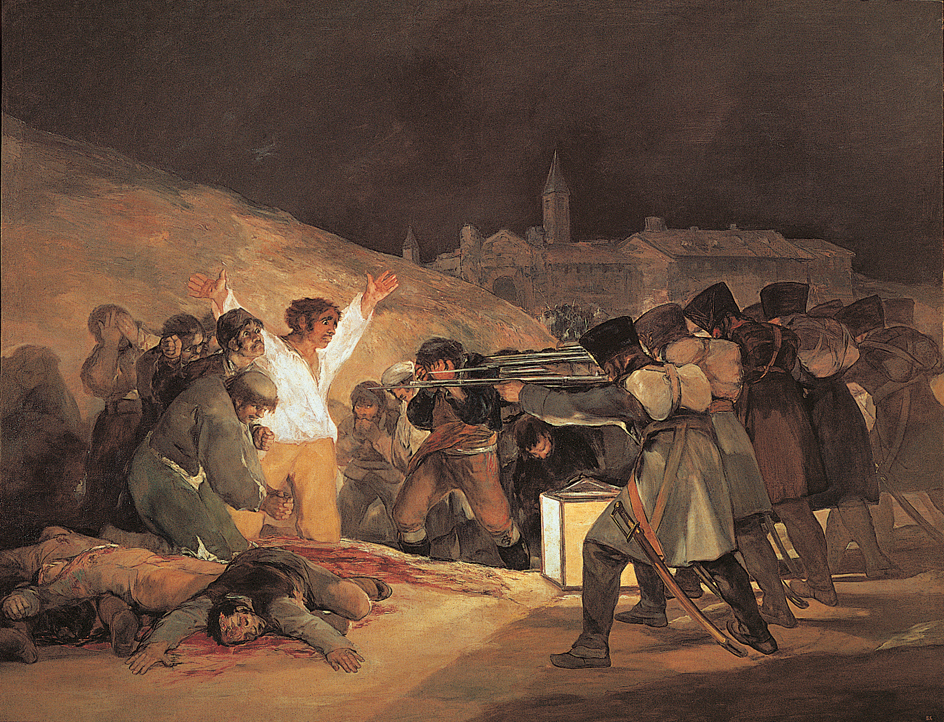Goya, << GOY uh, >> Francisco (1746-1828), a leading Spanish painter, was one of the first masters of modern art. His free brushwork and brilliant colors suggest to some critics the Impressionist movement of the late 1800’s. Goya’s skill in capturing a dramatic moment and his fantastic imagination influenced the Romantics of the early 1800’s. His bitter satire on human nature and his search for a deeper reality in human emotions and subconscious inspired Expressionism and Surrealism, two major art movements of the 1900’s.
Goya was born on March 30, 1746, near Saragossa. His full name was Francisco Jose de Goya y Lucientes. He studied painting in Madrid. In 1774, he was appointed painter to the Royal Tapestry Factory. His tapestry designs are typical of the late rococo style in their elegance of line and color. But their recording of daily events anticipates the realism of the 1800’s. Goya was admitted to the Royal Academy of Fine Arts in 1780. His paintings of the 1780’s seem rich and optimistic.
In 1792, Goya became ill and gradually lost his hearing. His art became more personal and more imaginative. In the 1790’s, he produced religious paintings, plus a series of biting social satires in his etchings The Caprices. His large portrait The Family of Charles IV (1800) is considered one of the most brilliant, revealing portraits of all time. The two Majas (ladies), one dressed and the other nude, created a sensation. Napoleon I’s invasion and occupation of Spain from 1808 to 1813 inspired Goya’s most powerful paintings—The Uprising of 2nd May and The Executions of 3rd May, 1808—and his prints—The Disasters of War. These works depict the horrors of war.

In 1820, isolated by his deafness, Goya retired to his country house near Madrid. He filled the house with nightmarish paintings. Unlike his war paintings, the fantastic horrors of these pictures are relieved by touches of morbid humor, delicate beauty, and realistic observation. In 1824, Goya moved to France to escape the harsh rule of King Ferdinand VII. His last paintings are again characterized by brilliant color and dazzling technique. He died on April 16, 1828.
